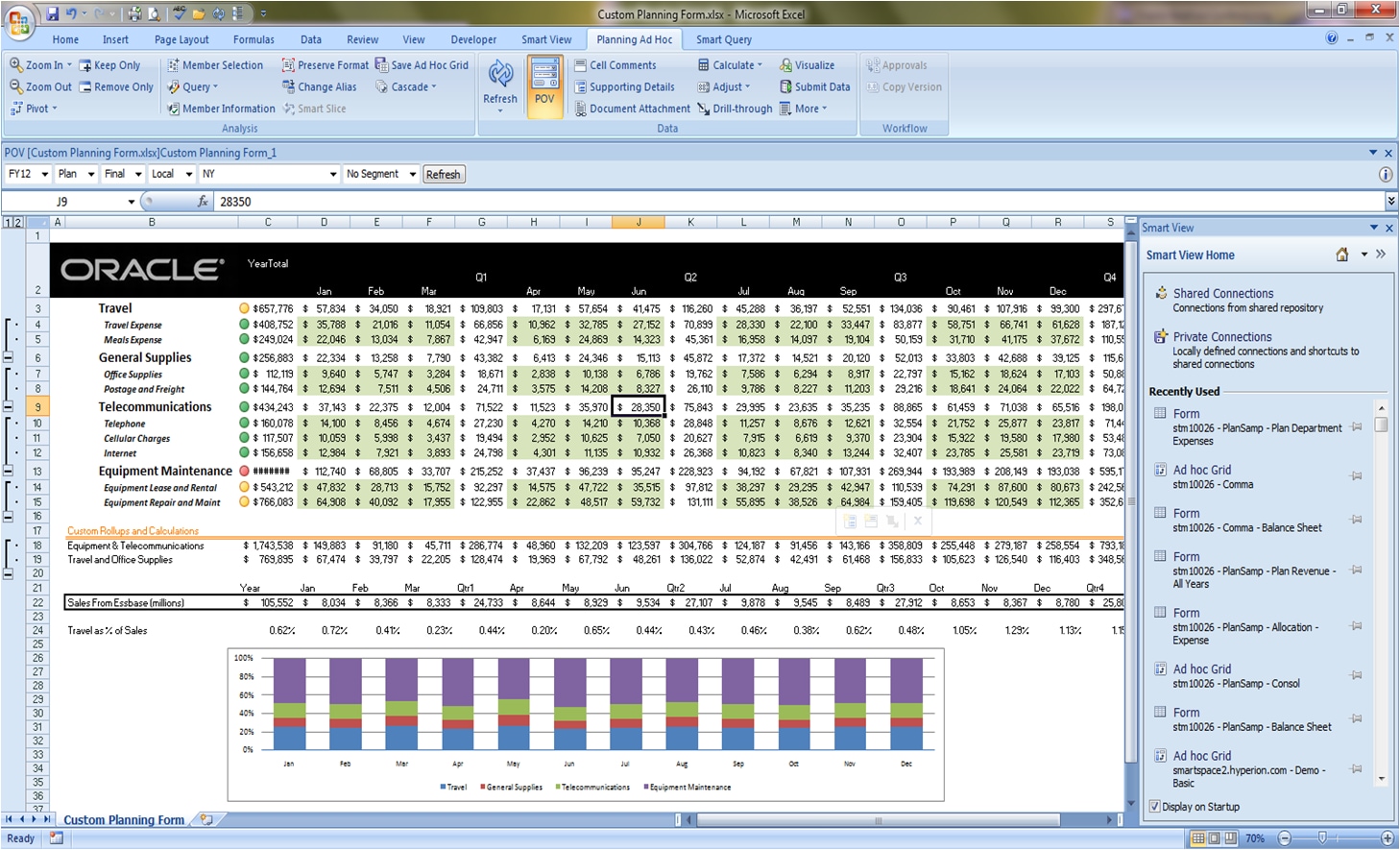Oracle Smart View for OfficeAnalyze, Update and ReportOracle Smart View for Office (Smart View) provides a common Microsoft Office interface designed specifically for Oracle's Enterprise Performance Management (EPM) and Business Intelligence (BI). Using Smart View, you can view, import, manipulate, distribute and share data in Microsoft Excel, Word and PowerPoint interfaces. It is a comprehensive tool for accessing and integrating EPM and BI content from Microsoft Office products.Ad hoc or Free-form Analysis for EPM & BI data in Office.Predefined Form Interaction.Report Design.Pre-Created Content Access. Ad hoc or Free-form Analysis for EPM and BI Data in OfficeThis is for users requiring an environment to have a conversation with the data. Typically they use the Excel environment to interactively investigate the data contained in the source(s). They may start with templates that begin the process (such as East Cola Sales) or a blank sheet where they begin shaping and altering the grids of data as they use the exposed functionality.

Smartview For Excel 2010 Download
Typically users go after the data from Oracle EPM on-premises sources such as Essbase, Planning or Financial Management using clicks and drag-and-drop. Other data sources supported for ad hoc analysis includes Oracle Business Intelligence Enterprise Edition, and Oracle EPM Cloud sources such as Oracle Planning and Budgeting Cloud.Predefined Form InteractionEPM application users that execute predefined input/reporting forms find Smart View a convenient way of completing tasks within the Office environment. These users would be planners, consolidators and the like that have a desire to work in the Excel environment either for consistent experience compared to the web application or to tie other spreadsheet-based models into their process. For example, Pepsi Bottling uses Smart View for Planning in order to incorporate data still housed in spreadsheet and workbook-based models.Report DesignReporting is another dimension of Smart View usage which leverages the capabilities of EPM data retrieves. Once the data is available within Office we can create reports as needed based on a combination of data sources. For example Planning and Financial Management data could be used to compare actual to budget. Reports could be made more complex by providing the ability to compare multiple scenarios and different periods.
The power of Office can be used to create reports in the Office environment and these reports can be refreshed periodically as needed.Pre-Created Content AccessAnother area of use is for importing pre-created content—for example, importing charts or grids from Oracle Hyperion Financial Reporting and Oracle Business Intelligence Enterprise Edition to PowerPoint, Word, or Excel. The imported content can be refreshed from the Office environment.
“The cloud” is a friendly way of describing web-based computing services that are hosted outside of your home or organization. When you use cloud-based services, your IT infrastructure resides off your property (off-premises), and is maintained by a third party (hosted), instead of residing on a server at your home or business (on-premises) that you maintain. With Office 365, for example, information storage, computation, and software are located and managed remotely on servers owned by Microsoft. Many services you use every day are a part of the cloud—everything from web-based email to mobile banking and online photo storage. Because this infrastructure is located online or “in the cloud,” you can access it virtually anywhere, from a PC, tablet, smartphone, or other device with an Internet connection.